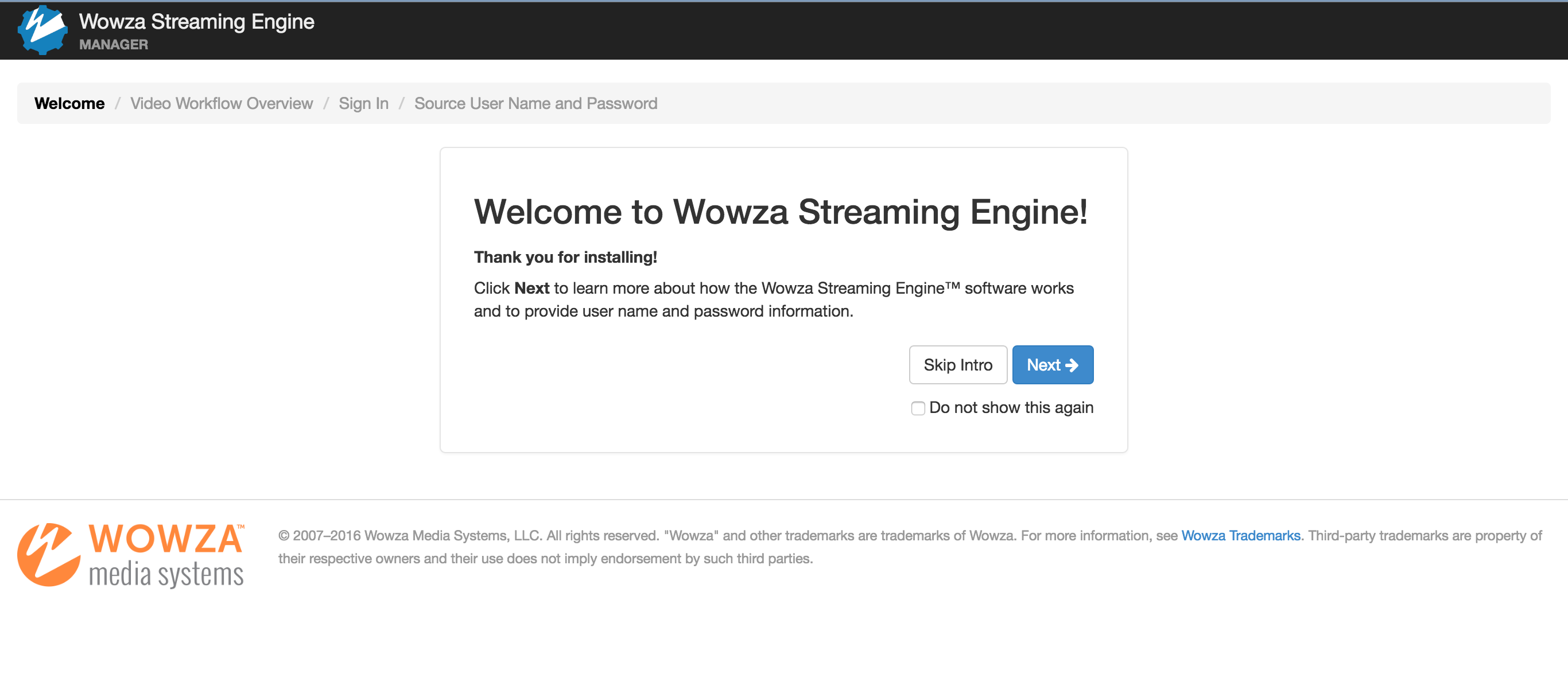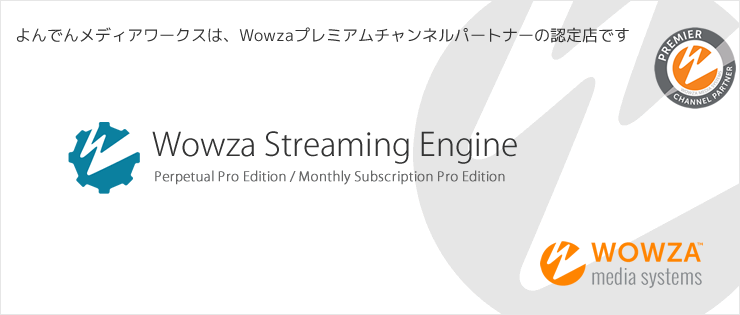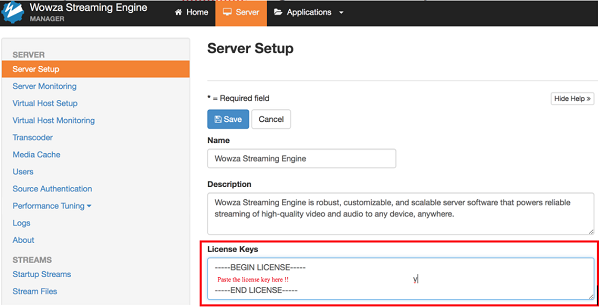

The product name was changed to Wowza Streaming Engine. Version 4.0 was released February 11, 2014.


Expanded support for closed captioning formats for live and video-on-demand streams. Wowza Media Server 3.6 added basic support for Dynamic Adaptive Streaming over HTTP (DASH). Other new features include B-frame support, Dolby Digital Plus (EAC3) pass-through for HLS, MPEG-DASH, HTTP Origin. The release included enhancements to Wowza Transcoder AddOn transcoder overlays that can be used for advertising, tilting, watermarks and tickers. Wowza also released Wowza StreamLock free AddOn which provides 256-bit SSL for RTMPS and HTTPS. Media Security DRM plugins with Verimetrix VCAS, Microsoft PlayReady, BuyDRM KeyOS Services, EZDRM Hosted DRM, AuthenTec DRM Fusion. Live Stream Record and Media Security, previously additional features external to the software, were incorporated into the server software. This version added Closed Captioning and a Silverlight Multicast Player. Version 3.5 was released on November 7, 2012. This version added network DVR, Live transcoding, and DRM plug-in functionality. Version 3.0.x was released on October 7, 2011. This version added outbound H.264 streaming support for Apple HTTP Live Streaming protocol for iOS devices (iPad, iPhone, etc.), Microsoft HTTP Smooth Streaming for Silverlight player, RTSP/RTP for QuickTime Player and mobile devices based on Android, BlackBerry ( RIM), Symbian (Symbian Foundation), Palm webOS (now owned by HP), and other platforms, and TV set-top boxes and video game consoles. The product name was changed to Wowza Media Server 2.

Version 2.0.x was released on December 17, 2009. Version 1.5.x was released on and added support for H.264 video and Advanced Audio Coding (AAC) audio, and ingest support for Real Time Streaming Protocol (RTSP), Real-time Transport Protocol (RTP), MPEG transport stream (MPEG-TS), and ICY ( SHOUTcast/ Icecast) sources for re-streaming to the Flash Player client. The original product name was Wowza Media Server Pro. This version was originally offered as an alternative to the Adobe Flash Media Server, and supported streamed video, audio and RIA’s for the Flash Player client playback and interaction based on the Real Time Messaging Protocol (RTMP) using content encoded with Spark and VP6 codecs. Version 1.0.x was released on February 19, 2007.


 0 kommentar(er)
0 kommentar(er)
